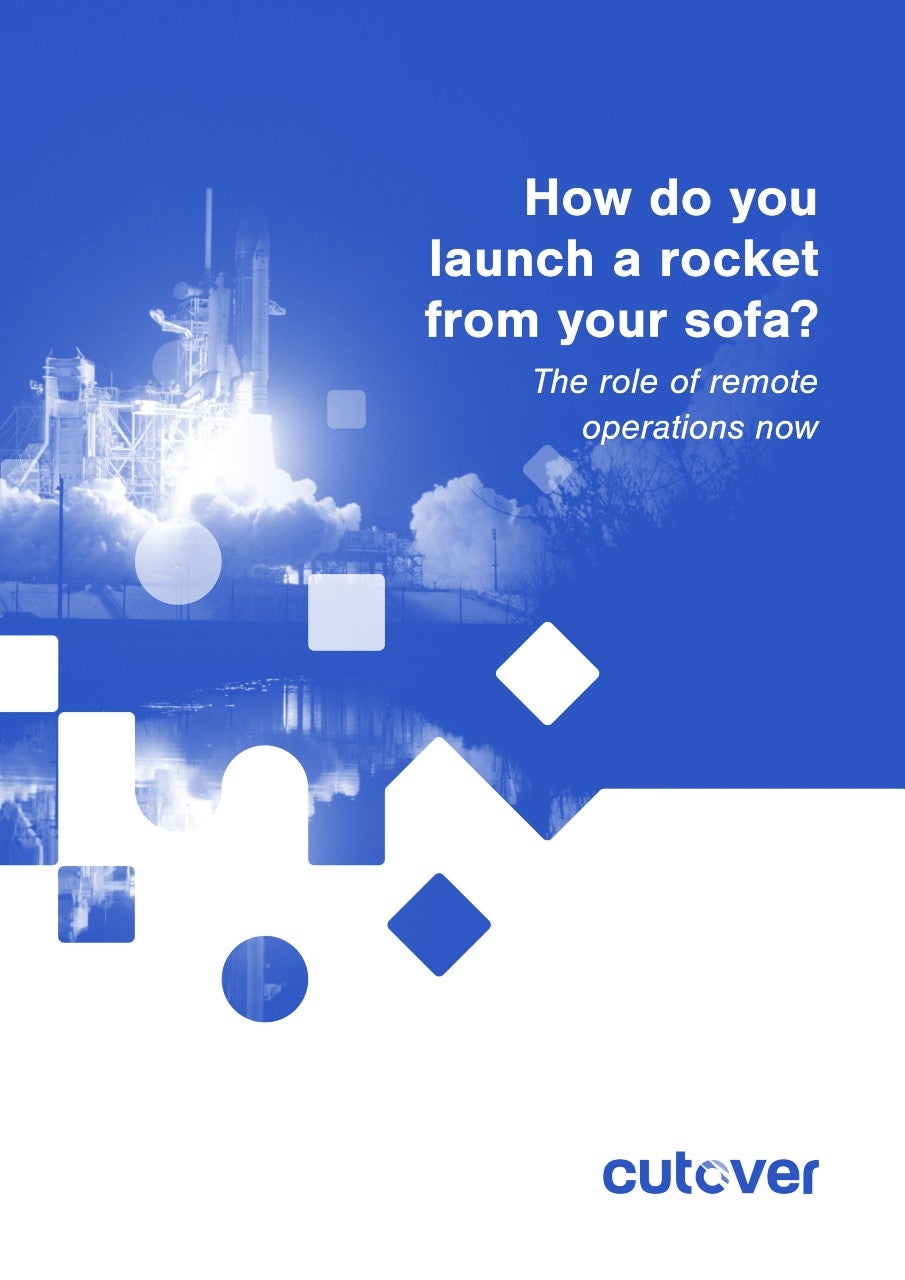
When Ky Nichol founded Cutover in 2014, his transition to tech CEO may have seemed like an unlikely change of course. Formerly a space exploration scientist, Nichol had started his career at NASA and the European Space Agency, developing mathematical models for micrometeorite craters and leading work on the International Space Station.
After some time as a tech consultant, Nichol decided to bring his space experience to bear in the fintech world. Together with an experienced group of co-founders, he quit his job, put down some savings, and developed a prototype for what would become Cutover.

US Tariffs are shifting - will you react or anticipate?
Don’t let policy changes catch you off guard. Stay proactive with real-time data and expert analysis.
By GlobalData“We built a platform that didn’t exist in 2014, and took it to Barclays Techstars Accelerator,” says Nichol. “After we’d worked with our first major banking client on two use-cases that they found, we took our platform to about 20 global banks, including three out of the top five US banks, which are all now using Cutover.”
With offices in London and New York, Cutover has grown rapidly since its inception. In 2019, the company raised $17m in a Series A funding round led by Index Ventures. Less than 18 months later, it secured a $35m Series B financing, led by Eldridge. Today, it is eyeing Series C and maturing, in Nichol’s words, from ‘a gangly teenager to a young adult’.
“I think there’s lots more we can do to get to a business of a few hundred million in annual recurring revenues. We don’t need to be bought by Microsoft or Salesforce,” says Nichol. “We’re also doubling our product engineering capability to build the huge number of things our clients want to augment on the platform.”
So, what exactly might an enterprise such as a large banking institution have in common with a space agency? Simply put, it comes down to “Mission Control”.
Space missions require precision, automation and watertight risk management strategies. They rely upon seamless collaboration between humans and technology, and a centralised mission control, in which people make smart decisions based on real-time data. The requirements are very similar, Nichol realised, when undertaking complex workflows.
“When a spacecraft docks with the International Space Station, you need live telemetry to control the tremendous risk,” he says. “But there is just as much complexity and risk at an enterprise, for instance when you take an app that handles trillions of payments per day and update it to match new regulatory requirements. Our thinking was that organisations needed live telemetry, great control, and great ways of bringing together humans and machines.”
Currently, not many organisations plan their operations with quite the same finesse as a rocket launch. Although cutting edge software is often deployed, during time-sensitive scenarios many still rely on phone calls, emails, and what Nichols calls “5,000-line spreadsheets downloaded from clunky old enterprise tools”.
The thinking behind Cutover was to create an enterprise-wide orchestration and observability platform that works like Mission Control. It uses automated runbook technology to cut a path through chaos and complexity, compressing timelines, reducing risk, and improving organisational resilience.
“Whether it was taking a company to IPO, onboarding a complex new client, releasing some huge new banking app or recovering an organisation when it had a horrendous technology failure – all of these things felt like they could do with an orchestration capability,” says Nichol. “We wanted to make all of that easier – pulling data, people, and processes together in a way that would previously have been screaming across the trading floor.”
The initial use-case at Cutover’s first major banking clients was in the payments area, helping the bank orchestrate application releases. The stakes were high – the bank needed to go live with new code, without imperilling the payments. After that, the client spotted a different use-case in operational resilience – recovering operations if something goes down.
Cloud migration and platform implementation
As the platform’s user base began to grow beyond financial services (encompassing telcos, pharma companies and energy firms, as well as financial institutions), two additional use-cases emerged. These were cloud migration and platform implementation.
In each case, work is observable automatically without interruptions, bridging the gap between management and the teams doing the work. Repetitive tasks are automated, while leaving the oversight and decision-making to humans.
“Some organisations take the perspective that you can just automate everything and build it into an algorithm that will solve it for you,” says Nichol. “But complex engineered systems can still fail – look at Beagle 2. The things you can do together with a machine, like taking a human to Mars, are 1000 times greater than what you could achieve by just coding it in the machine.”
Nichol and his team have observed that companies starting down an automation path can sometimes get over-excited about the possibilities brought by automation alone.
“When humans log in to shut down a server, they’re probably not going to accidentally do it a million times, whereas when it’s a few lines of code you might accidentally run that a million times and shut down all your servers,” he says. “You expose yourself to some risks you didn’t have when it was manual, so you’ve still got to have Mission Control.”
As Cutover moves into its next phase, the company is aiming to augment each of its product lines, with a single thread of leadership behind each one. Generally, clients don’t buy the platform for its platform nature – they buy it for solving specific problems. Cutover wants to make sure it’s engineering the solutions they actually need.
“So far, we’ve just built the platform, as opposed to building specific features for specific use cases,” says Nichol. “I think we’re going to keep to that ethos, but we are going to start focusing on exactly what we build to improve our specificity in the products we have.”
He adds that, while the typical image of Mission Control is a group of flight controllers stationed in a room together, Cutover supports a more distributed concept. This is a more efficient use of time and resources, as well as being compatible with remote working.
“It’s not so much that everybody has to have their eyes on the screen at a particular point in time, as that this person will get involved if this thing’s wrong – you could be launching rockets from your bedroom,” he says.
Cutover’s brand of Mission Control is also highly scalable. It can be deployed at speed, both by large enterprises that need to use its solutions every day and small businesses that require complex project management a couple of times a year. Nichol hopes that it will free up enterprises to be a little more experimental in how they manage projects – testing out new approaches and discovering what works.
“We want to lower the bar to entry to try these experiments out, because we think that’s how we’ll work over the next five to ten years,” he says. “Even today, you interact with many more teams, geographies and applications in getting your job done than you did in the past. And all of that is just going to be a chunk easier.”
One small step for an enterprise, one giant leap for the world of work? For a company so grounded in the granular, Cutover remains resolutely astronomical in its ambitions.





